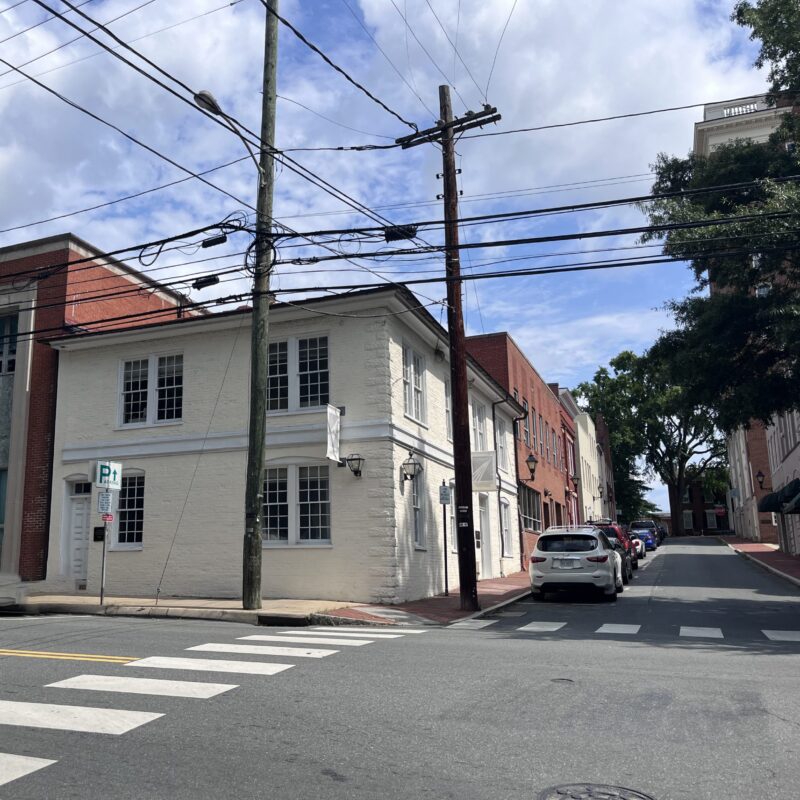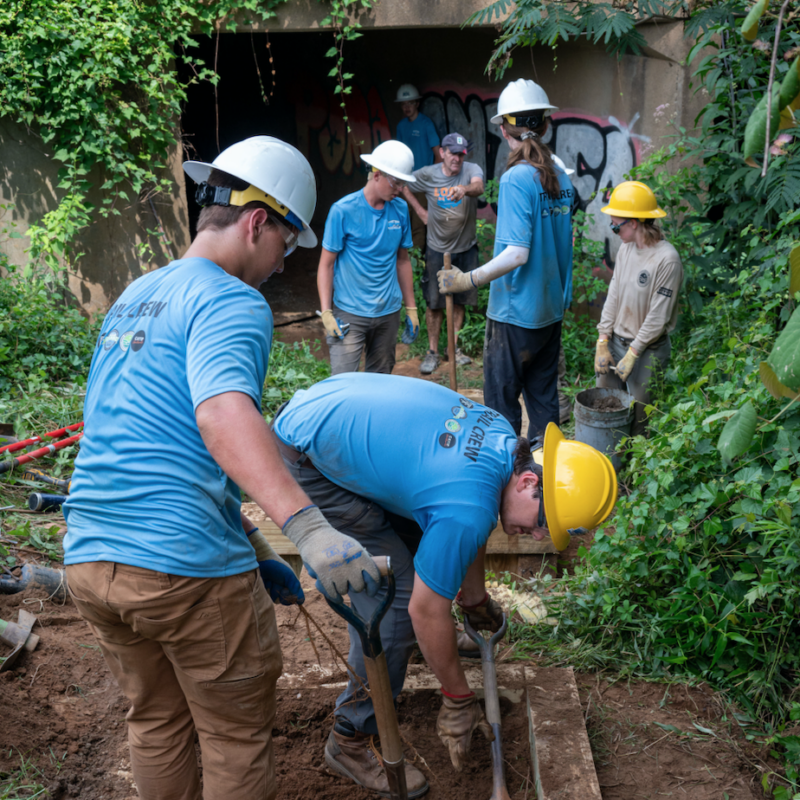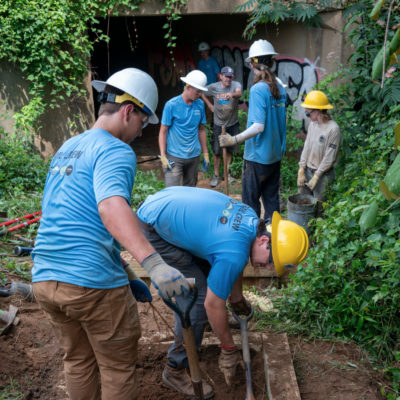A sense of vindication seemed to be in the air at the RWSA press conference and board meeting last week. On September 22, Rivanna Water and Sewer Authority’s executive director Tom Frederick delivered bad news about one of the plan’s major pieces.
At a press conference, Frederick revealed that last month, beleaguered consultants Gannett Fleming nearly doubled cost estimates of a new dam at the Ragged Mountain Reservoir to $72 million from $37 million (to go along with between $4.6 million and $16.6 million to protect the reservoir from spills on I-64). RWSA halted work on the dam and had a new firm, Schnabel Engineering, review Gannett Fleming’s numbers. Schnabel trimmed the estimate to $56 million. Now, RWSA is assembling an independent review panel of at least three dam experts to decide how to proceed. It won’t be appointed for another month, and isn’t likely to deliver a conclusion until the end of the year.
|
After geophysical testing, Gannett Fleming says that fragmented rock at Ragged Mountain will raise the cost to $72 million from $37 million. The water authority has stopped work until an independent panel of dam experts can weigh in. |
Elected officials are standing by the water supply plan, but for opponents, who call themselves Citizens for a Sustainable Water Plan, the news confirmed a central tenet of their arguments—that the plan is too expensive, something they were saying even when it was pegged at $143 million instead of the $170 million it now appears it will minimally cost. They took the opportunity of an RWSA board meeting to hammer another point, that dredging should come before a new dam and pipeline.
“The first thing you should do when you’re found in a deep hole is stop shoveling,” said Rich Collins, who as recently as 2003 chaired RWSA.
Two plan opponents called on the five-member board to resign. Former city councilor Kevin Lynch, who (to borrow a phrase) was for the water supply plan before he was against it, said, “I now believe I was an unwitting participant in a fraud on the taxpayers and ratepayers. …It’s time for this board to admit that you have no business making decisions about our community water supply. We need a new plan and a new board.”
Betty Mooney directly asked the board to resign. “It’s time. You need to leave this board, and if you don’t leave it, the citizens have a right to dissolve this authority, and they will exercise that right, believe me.”
|
Despite the increased dam estimates, “there has yet to be an alternative proposed that costs less than the one that’s on the table now,” noted city Mayor Dave Norris. Even if dredging is dramatically cheaper than originally billed, it would still have to be coupled with reservoir expansion to meet demand projections. |
But it seems unlikely that four out of five members could step down without quitting their jobs, since they are on the RWSA board because of their job titles—County Executive Bob Tucker, City Manager Gary O’Connell, city Public Works Director Judith Mueller and Albemarle County Service Authority Executive Director Gary Fern. Only Chairman Mike Gaffney could resign, and he said during the meeting that he resented the accusation that the board was not acting in the best interest of the community.
To change the board, essentially the charter of the Rivanna Water and Sewer Authority would have to be changed by a joint decision of City Council and the Board of Supervisors. And that’s something that city Mayor Dave Norris says that he and county Board of Supervisors chairman Ken Boyd are working on.
Norris says that it’s unclear whether they will move to add two elected officials to make it a seven-person board or whether they will look to replace two members with elected officials. Regardless, the point is to get some people on the board who are directly accountable to the voters.
So the board may change, even if it’s not the way Mooney envisioned. But how about the plan? As Norris pointed out during last week’s press conference, “there has yet to be an alternative proposed that accomplishes our goals that costs less than the one that’s on the table now.”
To be sure, the dam’s delay allows for the possibility that a dredging study could be conducted and a more firm price tag reached. But even if dredging does prove viable, it will still have to be combined with other measures to provide for 50 years of water supply based on demand projections.
If RWSA goes back to the drawing board for the water supply, those who wish to keep the water supply within the local watershed ought to be wary. Neil Williamson, executive director of the Free Enterprise Forum, says, “If we go back to the beginning, all options should be on the table—including a pipeline from the James River.” He points out that Fluvanna and Louisa are in the midst of designing a James pipeline for their water needs, and there could be opportunities to piggyback on their efforts.
C-VILLE welcomes news tips from readers. Send them to news@c-ville.com.







